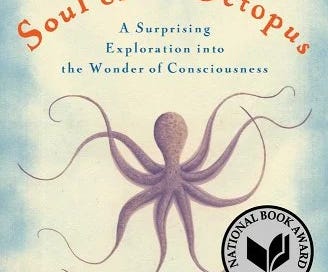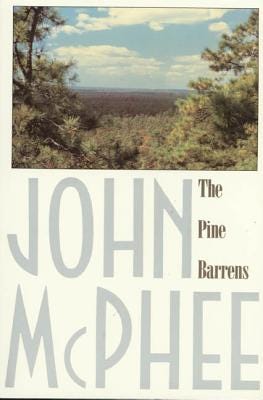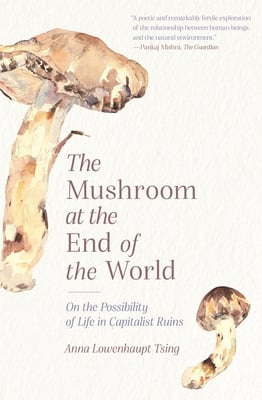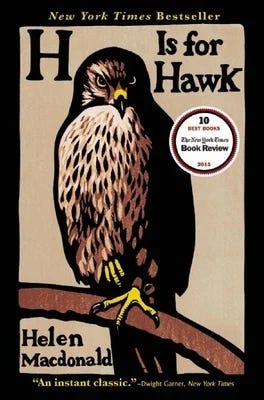Book Rex: Nature books that aren't stone-cold bummers
Can we please just occasionally enjoy nature without talking about how the world's ending?
I live right by the beach, and a few weeks ago, I had a pretty cool experience. It was rainy, so I went for a walk, and I saw a lot of cool ducks.
That’s it — that’s the entire experience.
Getting out into nature a bit more has been an incredibly pleasant experience for me — I spent much of my childhood in the woods at the bottom of our street, and I rarely saw wildlife beyond squirrels. But now, here on the shore, I regularly see hawks, migratory birds, and occasionally foxes, snapping turtles, dolphins, and whales.
Seeing an animal instantly improves my day. I will usually go find and read a book about that animal, but half the time these days, nature writing is about the grief associated with climate change, and how all is lost.
I understand the importance of communicating the emergency, but also… nature’s still super cool? There’s still really neat stuff happening? And wonder and awe are what truly fuel our love of nature and our desire to save it. So here are books that didn’t completely depress me about the state of nature (and at least one that kinda did, but gave me reason to hope).
.
1. The Pine Barrens by John McPhee
One of my favorite things about living in New Jersey is that there’s this massive swath of the state — the most densely populated state in the country, and smack dab in the middle of the massive Mid-Atlantic urban sprawl extending from Boston all the way down to D.C. — that is just empty coastal pinelands.
New Jersey’s Pine Barrens have bad soil, which kept them from getting overdeveloped like the rest of the Mid-Atlantic sprawl, and have a long history of hiding people who didn’t want to be found: Revolutionary War deserters, runaway slaves, raiding pirates, and, as in The Sopranos, whatever bodies the New York and New Jersey mobsters needed to dispose of so they’d never be found.
John McPhee’s book is a bit old — it came out in 1968 — but it’s still beautiful writing. He goes into the area’s history, its ecology, and its culture. It’s an amazing glimpse into the most maligned place in America’s most maligned state.
2. The Mushroom at the End of the World by Anna Lowenhaupt Tsing
This was my favorite book of 2021. It’s about the matsutake mushroom, which is a type of fungus that thrives in desolated landscapes. It is rumored to be the first thing that grew in the ruins of Hiroshima after the atomic bomb was dropped, and it now thrives in the clear-cut pinelands of the Pacific Northwest.
It’s also a culinary delicacy in Japan, which means that people who know how to find the mushroom can sell it at a high price. The work is not entirely legitimate — often, matsutake foragers have to hunt on private or protected land — which means that most of the people who do this are on the fringes of society.
Matsutake hunters include undocumented Hispanic immigrants, Vietnamese Hmong refugees, and far-right Vietnam Vets who have retreated to the woods, and see the fungi as a means of remaining self-sufficient and hidden from Uncle Sam.
Lowenhaupt Tsing sees the matsutake as indicative of how life can go on even in the face of environmental collapse, and the book, while dealing with dark shit, is ultimately a hopeful, even happy book.
3. The Soul of an Octopus by Sy Montgomery
The more we learn about Octopi, the smarter we realize they are: Sy Montgomery’s book The Soul of an Octopus is an investigation into the intelligence and personalities of these curious cephalopods.
The majority of the book is focused on Montgomery’s relationship with octopi living in the New England aquarium near her home, and her realization that different octopi have distinct and diverse personalities. Octopi’s neurological wiring is enormously different to that of humans (our common ancestor existed 518 million years ago), but that doesn’t mean they aren’t smart — they seem to have evolved a totally different but still-impressive form of intelligence that we are just beginning to understand.
4. H is for Hawk by Helen Macdonald
While mourning the sudden death of her beloved father, falconer Helen Macdonald decided to train a goshawk named Mabel. Goshawks are considered difficult, wild birds in the falconry community, and in the immersive act of training this bird to both trust her and to hunt with her, Macdonald was able to first blot out, and then come to terms with her grief. The book is a meditation on loss and mourning, but the most spectacular bits of it are when she begins to see that there is more to Mabel than she can even comprehend.
This is often a sad book, but it’s not a bummer. There’s as much awe in it as there is sadness.
5. The Sixth Extinction by Elizabeth Kolbert
Okay — hear me out. Technically, this Pulitzer Prize-winning book is about the human-caused sixth mass extinction of animals on the planet. It should be incredibly bleak. But I didn’t find it depressing!
Kolbert’s book tracks the history of extinctions and also the history of humanity’s understanding of how they work. For a long time, we didn’t understand dinosaur bones, because the idea that God would put a species on earth and then take it off was inconceivable — his design, after all, was flawless.
But as we began to explore more of the world, we began to find evidence of creatures that we just couldn’t find anywhere. The concept of mass extinction events was controversial for a long time, but we now know there have been at least 5 mass extinction events in earth’s history. We are in the middle of the sixth.
The reason this isn’t a depressing book is because Kolbert’s view of it is so big-picture. There’s a very real sense in which humans have always fundamentally altered our environments (we did, after all, kill off all the wooly mammoths and mastodons), but we also have the ability to not destroy everything around us — she finishes the book with ways in which we’ve already managed to save species that, without action, would already be gone.











